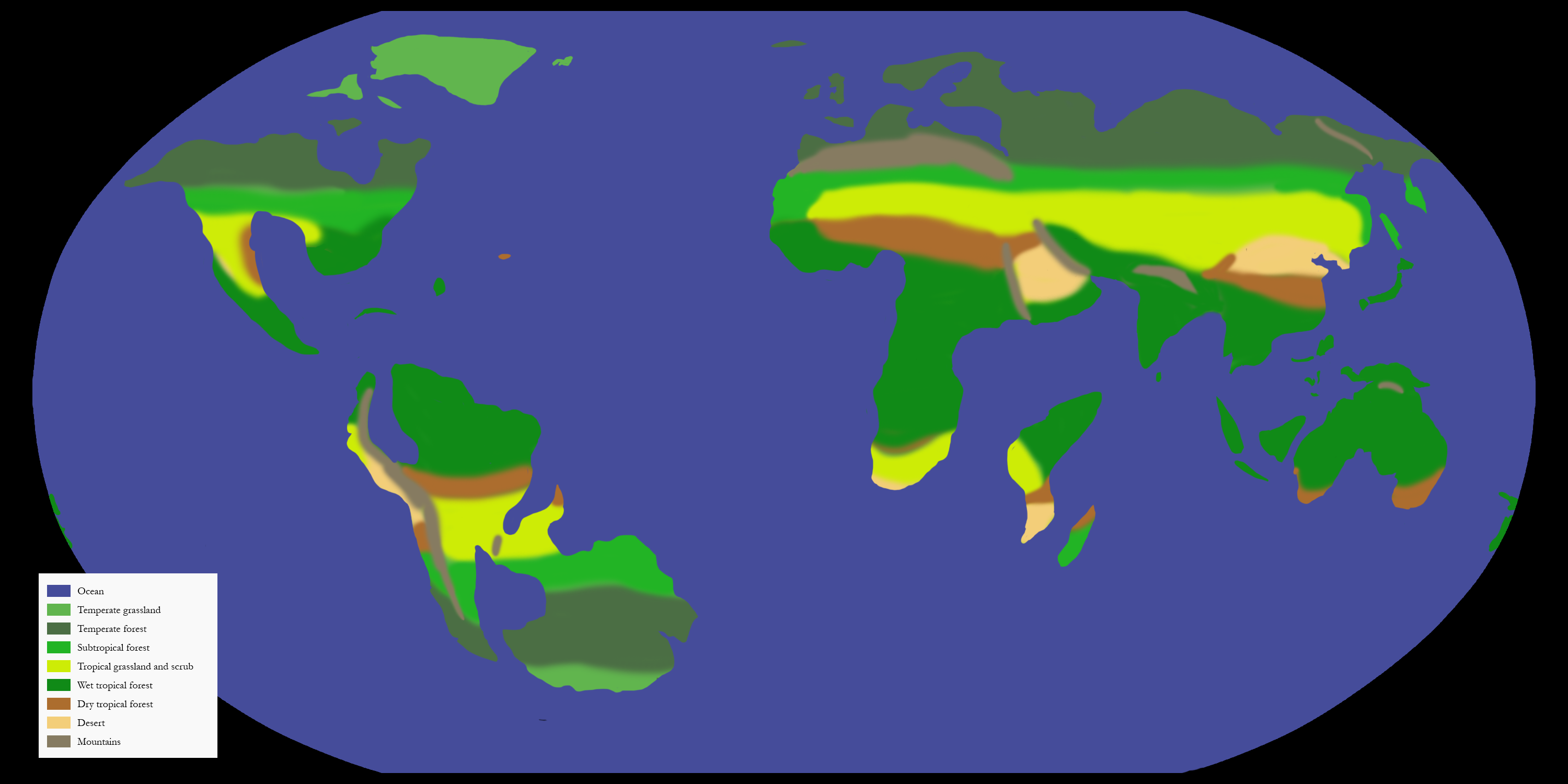
The Proximozoic
52-205 million years hence
The Proximozoic is a warm and wet era, with remarkable climatic stability. Sea levels are high, forests are widespread, and the coastlines are ringed by swamps. New mountain ranges form as Africa and Australia collide with Eurasia, while Antarctica once again connects with South America. Unlike the Cenozoic, mammals, birds, and reptiles retain a more equal share of ecological dominance throughout the era, and new major clades evolve within these groups.
During the Proximozoic, the Atlantic Ocean reaches its maximum extent. As the mid-Atlantic ridge subducts, the ocean will close, bringing the continents together again. Temperatures peak around 144 myh, with a period of decrease before rising again leading into the Neozoic. The Proximozoic ends with the closure of the Atlantic, and a coincident mass extinction.
Geography and climate
 100 million years hence; late Tularean
100 million years hence; late Tularean
100 million years in the future, the continents have moved noticeably from their modern positions. Africa and Arabia’s northward movement have created three mountain ranges: the Red, Persian, and Mediterranean ranges. Australia and Antarctica have both moved northward as well, with the latter colliding with South America to form a continent deemed Terranova. This is approximately the maximum extent of the Atlantic Ocean - at the end of the Tularean period, 101 million years hence, the mid-Atlantic ridge will have fully subducted, and contraction of the Atlantic will begin.
Temperatures are hotter in the early Proximozoic than they are today, and the air is humid. Tropical rainforests form a wide belt around the equator, reaching to what is now Virginia, Namibia, and Japan. Inland seas extend into many continents, and these are lined by muggy swamps and mangroves. Deserts are limited and tropical grasslands are widespread. Another thick belt of forest covers more temperate zones, with temperate grasslands limited to the most poleward regions of Canada, Greenland, and Antarctica.
 62 million years
62 million years 75 million years
75 million years 90 million years
90 million years 135 million years
135 million years 175 million years
175 million years 200 million years
200 million years